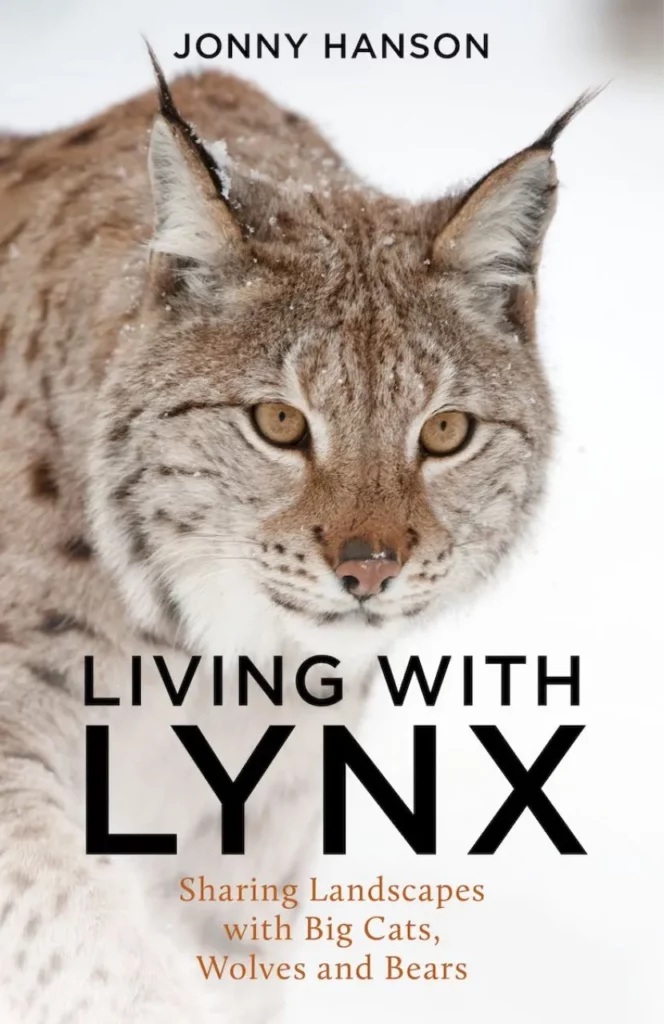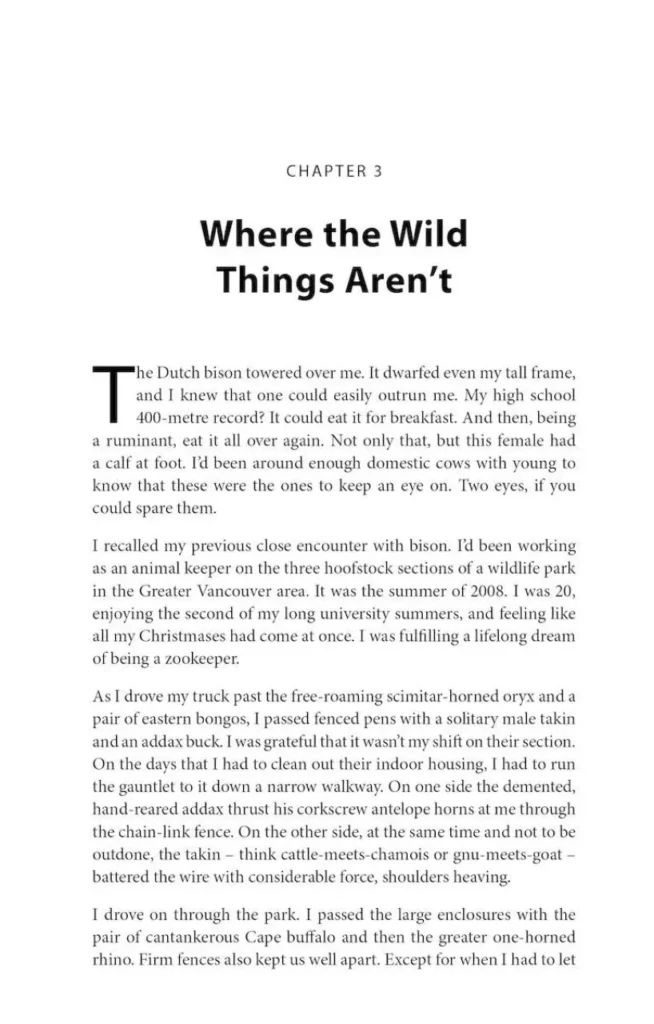Living with Lynx
Jonny Hanson

This is a timely tome. With the recent news of the ill thought out and illegal release of four Lynx in Scotland, the question of carnivore reintroductions in Britain (and Ireland) is very much of the moment. The author asks us to join him as he takes us on an adventure into ‘the most controversial environmental issue in 21st century Britain or Ireland: whether we could and should learn to live with Lynx, Wolf and Bear again.’
The debate is a polarising one, often generating very passionate feelings on both sides, so it is refreshing and pleasing therefore to read a book that explores all aspects of it without taking sides. Jonny Hanson sits on the fence, using his experiences of social enterprise, farming and conservation (among others) to frame the compelling narrative of the book. He is not afraid to admit that he feels ‘numerous, competing and often contradictory feelings about returning these predators…’, but that, as he points out, is normal and is something that must be borne in mind by all who voice their opinions on this subject.
I enjoyed reading this book, but I do have one small criticism, the beautiful cover and the large print title of Living with Lynx gave me the opinion, before I started reading it, that this was a book that was going to deal largely with the Lynx and its proposed reintroduction to Britain (and Ireland – although as he says when discussing Ireland, that might read as an introduction). The book’s subtitle is sharing landscapes with big cats, wolves and bears and this is what the book is really about. Lynx do get a mention, but it is the bears and primarily the wolves with which it deals the most, especially when looking at actual experiences and conflicts.

View this book on the NHBS website
That said, this is a very important read for anyone with views on the reintroduction of Lynx; after all, whether the carnivorous predator in question is a Lynx or a Wolf, the issues surrounding any such scheme are pretty much the same. No matter how ardent a rewilder you are, there can be no denying that their reintroduction can cause conflict. But this book importantly does not just focus on the conflicts between people and predators – it also focuses on the conflict between people over predators, something that Jonny correctly argues is by far the more important conflict of the two.
To help diffuse the conflict potential in any proposed scheme, Jonny states very clearly that we need to shape the conversation around five key factors: psychology; ecology; politics; philosophy and economics. I found this particularly interesting and the author takes us through each one in turn, explaining why they are important in an easy going, yet very clear manner. The key issue in any scheme though will be its governance. The reintroduction of any large carnivore is not going to be just a two year project carried out by a small team. Rather, it is going to be a very long-term commitment from society as a whole, and as such it needs to have robust governance in place, not just overseeing its management at a high level, but also of the many systems that will need to be in place for it to work. In reality, this means that it will need some form of state oversight and the author expresses his concern over whether our governments are up to the task.
One of the many key messages in this book is that ‘Those most affected should be the most consulted…’, yet sadly this is not always the case, as the author points out using examples from elsewhere in Europe, as well as in North America and Asia. Just because someone may have concerns about a scheme that does not chime with our own, it does not mean that we should ignore them.
This is a very good book and an important one. A book that talks about governance, economics, politics etc may lead some to expect that it will be dull, but this is not a dull book. It is well thought out, it does not avoid asking pertinent questions, and it is written with passion, as well as with doses of humour – the money-making mosquito scheme is a personal favourite!
The chapter entitled Money Talks, which looks at the various compensation schemes and potential financial incentives in use in areas where people do coexist with these large predators, is a good example of how this book works. It highlights the issues on all sides, the problems, the benefits, the frustrations and the successes, it also demonstrates just how vital good governance of these schemes is for any reintroduction project to succeed in the long term. The last line of that chapter is, ‘Money talks. We listen. And coexistence is a price well worth paying.’ Indeed.
I recommend this book to all who have a view on the large carnivore reintroduction debate.
Reviewed by Ian Parsons
Ian spent twenty years as a Forest Ranger before turning his attention to Nature Writing. Ian is the author of A Vulture Landscape, Seasonality, Of the Trees and the Birds and is also the editor and a contributor to Great Misconceptions – Rewilding Myths and Misunderstandings.
